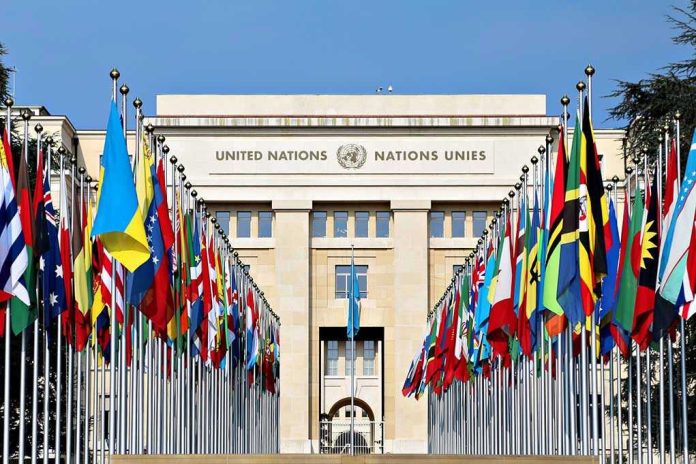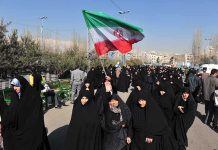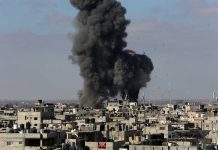
When American aid workers end up dodging grenades from terrorists while delivering food to starving civilians, you have to ask: how did we get to a place where doing the right thing makes you a target—and the so-called “global humanitarian community” stands on the sidelines clucking about “neutrality”?
At a Glance
- Two American aid workers with the Gaza Humanitarian Foundation (GHF) were injured by a Hamas grenade attack at a food distribution site in southern Gaza.
- GHF, a new aid group, bypasses both Hamas and the United Nations to deliver food directly to civilians—making it a target for both.
- Despite explicit threats and violence from Hamas, GHF has delivered over 62 million meals since May 2025.
- The United Nations has criticized GHF’s approach, while Israel and the United States publicly support the group’s mission and condemn the attack.
Hamas Turns Grenades on American Aid Workers—While the UN Points Fingers
On July 5, 2025, the Gaza Humanitarian Foundation’s food distribution site in southern Gaza became the latest front line in a war on common sense. Two American aid workers, protected by private US security, were wounded when Hamas operatives hurled grenades into the crowd at the end of another marathon aid delivery. The organization, which has been under constant threat from Hamas for refusing to play by Gaza’s rigged rules, managed to get thousands of meals into the hands of hungry civilians—only to watch the so-called “resistance” try to bomb the very people feeding their own population.
Hamas’s message is clear: Accept food from anyone who isn’t under their thumb, and you’re next. The only thing more shocking than the attack itself is the response from the United Nations, which had the gall to publicly scold GHF for “jeopardizing neutrality” instead of slamming terror tactics aimed at American and Palestinian aid workers alike. You’d think the UN’s job was to get aid to those in need, not to preserve the monopoly of a terrorist organization over who gets to eat and who doesn’t.
A New Model for Aid, and a New Set of Enemies
GHF was formed in May 2025 to cut through the Kafkaesque mess of “humanitarian” bureaucracy that’s left Gaza’s civilians stuck between Hamas’s corruption and the UN’s endless dithering. Rather than handing over shipments to Hamas-controlled warehouses, GHF delivers food directly to those who need it, using private security and with a green light from Israel for operations. For this crime—feeding people without the “proper” middlemen—GHF’s staff have faced death threats, bounties, and now outright attacks. The numbers tell the story: 12 Palestinian aid workers killed in June alone, bounties placed on staff, and Hamas operatives openly stalking food sites. Still, GHF has delivered over 62 million meals, hitting its one-millionth aid box just days before the attack.
Meanwhile, the UN and assorted NGOs have done little more than issue press releases, apparently more concerned with protecting their turf than the lives of Americans or Palestinians willing to risk everything to do their job. Israeli officials condemned the attack and called for the world to recognize Hamas’s “brutality,” while U.S. State Department spokespeople denounced it as yet more evidence of terrorist depravity. GHF’s leadership, refusing to be cowed, announced they’re not going anywhere—despite the mounting cost.
Aid as a Weapon—and Civilians in the Crossfire
Hamas’s strategy is as old as tyranny itself: Control the food, control the people. By treating humanitarian aid as a political weapon, they keep desperate civilians dependent and punish anyone who tries to offer an alternative. Gazan civilians now face the impossible choice of going hungry, risking their lives to accept GHF aid, or playing by Hamas’s rules and hoping for the best. The attack has not only disrupted aid operations but also sparked new fears among workers and recipients alike.
Independent experts warn that the more organizations like GHF are attacked, the more likely it is that Gaza’s humanitarian crisis will deepen. The attack has also thrown a harsh spotlight on the UN’s role: while critics argue that bypassing traditional frameworks is risky, others point out that established channels have failed to deliver, or worse, have been co-opted by the very groups causing the suffering. Calls are mounting for a fundamental rethink of how aid is delivered in war zones—and whether the UN’s obsession with “neutrality” is just a fig leaf for inaction and appeasement.
The World Watches, and Civilians Pay the Price
The aftermath of the attack is a grim preview of what happens when “neutrality” becomes cowardice and bureaucracy trumps common sense. GHF’s workers, both American and Palestinian, now operate under even greater threat. Civilians, already traumatized by war and hunger, face new dangers for the simple act of accepting help from the wrong source. The international aid community is left to debate models and frameworks while real people bleed and starve—caught in a deadly game of politics where virtue signaling is valued above action, and terrorists dictate the rules of engagement.
Until leaders and institutions find the backbone to prioritize results over process, and to call out evil by its name, expect more senseless violence, more empty platitudes, and more innocent lives shattered. If this is what passes for “humanitarian leadership” in 2025, the world needs far less bureaucracy—and a lot more courage.
Sources:
Foundation for Defense of Democracies (FDD)









